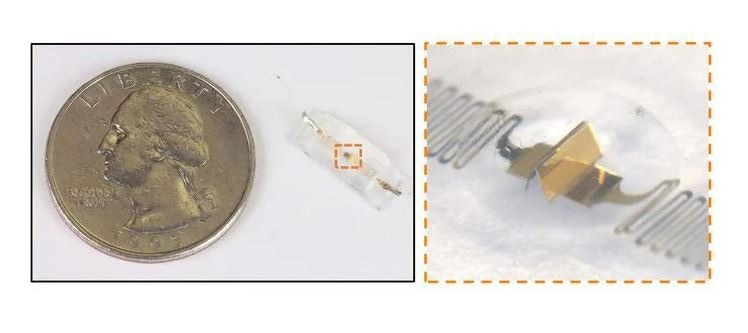At the University of Southern California (USC) Viterbi School of Engineering, scientists looked to origami to develop new sensors that could one day be applied to detect deformations in organs and also for usage in soft robotics and wearables.

Researchers at the USC Viterbi School of Engineering looked to origami to create new sensors that could someday be employed to detect deformations in organs and also for use in wearables and soft robotics. Photo: The Zhao Research Group, USC Viterbi School of Engineering
Their study entitled, “High-Stretchability and Low-Hysteresis Strain Sensors Using Origami-Inspired 3D Mesostructures,” featured in the journal Science Advances describes how USC scientists Hangbo Zhao, Xinghao Huang, Liangshu Liu, Yung Hsin Lin, Rui Feng, Yiyang Shen, and Yuanning Chang developed “stretchable strain sensors,” that could quantify how much an object strains or deforms.
The challenge is to create sensors that can stretch significantly, respond quickly, and give precise readings even when measuring large and dynamic deformations.
Hangbo Zhao, Study Corresponding Author and Assistant Professor of Aerospace and Mechanical Engineering and Biomedical Engineering, University of Southern California
Current stretchable strain sensors mostly utilize soft materials like rubber—but this material could have irreversible alterations in the material properties via repeated use, thereby producing uncertain metrics concerning deformation detection.
Hence, a new type of structure for the sensors was designed by the scientists. Taking inspiration from origami, highly rigid materials have been folded with electrodes on every side of the panel.
As the electrodes unfold, the strength of the electrical field between the electrodes has been captured. A model that has been developed by the research group then transforms this reading into a measurement that has the potential to capture the amplitude of the deformation.
The newly created sensors have the potential to stretch up to three times their original size with high sensing precision even with repeated use. Besides, the sensors respond rapidly, detecting deformations below 22 milliseconds in tiny areas (around 5 square millimeters). Also, they have the potential to detect strain from various directions.
Such sensors have the potential to quantify large and complicated deformations precisely, which could have applications in sensing the motions of soft robots. This tracks movements of human joints, or even monitoring organs like the bladder to identify abnormalities that may denote the cause of disease.
Journal Reference:
Huang, X., et al. (2023) High-stretchability and low-hysteresis strain sensors using origami-inspired 3D mesostructures. Science Advances. doi.org/10.1126/sciadv.adh9799.